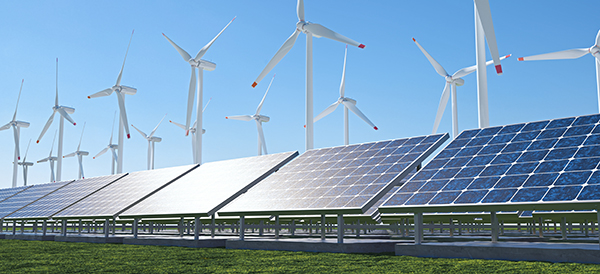 Parler
Parler Gab
Gab
A July 30 piece from John Miltimore of the American Institute for Economic Research supports the second alternative. The title is “Why the ‘Green Economy’ Is Suddenly in Retreat—in EU, US, and on Wall Street.” Meanwhile New York, at least for the moment, remains hell-bent on moving toward a full-on crash.
Miltimore’s piece collects data from multiple sources — notably the recent EU elections, EU regulatory changes, and actions of major U.S. investors. The most significant item in the piece relates to the withdrawal of several of the largest U.S. fund managers from something called Climate Action 100+. Climate Action 100+ describes itself as “an investor-led initiative to ensure the world’s largest corporate greenhouse gas emitters take appropriate action on climate change in order to mitigate financial risk and to maximize the long-term value of assets.” But it seems that in recent months some of the biggest investors have decided to change strategy. J.P. Morgan Chase and State Street have “pulled all funds” from Climate Action 100+ commitments, while their even larger colleague Black Rock “reduced its holdings and scaled back its ties to the group.” Miltimore cites a New York Times article from February quantifying the various withdrawals: “All told, the moves amount to a nearly $14 trillion exit from an organization meant to marshal Wall Street’s clout to expand the climate agenda.” $14 trillion is a big number in anybody’s book.
On the European front, Miltimore cites the results of the EU parliamentary elections in June together with various regulatory roll-backs both before and after those elections. He (fairly) describes the parliamentary election results as a “greenlash” against various Green parties, and particularly notes the disastrous result for the German Greens: “In Germany, the core country of the European green movement, support for the Greens plunged from 20.5 percent in 2019 to 12 percent.” He then collects a list of various climate-related regulatory initiatives that have either stalled or gotten rescinded in the EU, including: new restrictions on the use of pesticides; proposed bans on PFAS (per- and polyfluoroalkyl substances); restrictions on new industrial emission, (which ended up getting relaxed on industries and tweaked to exclude cattle farms altogether); and a new deforestation law. Meanwhile, efforts in various countries to ban combustion vehicles, restrict heating of swimming pools, and require electric heating of homes have led to serious popular push-back (if not yet to rescission of the regulations).
My comment is that much of Europe — particularly the UK and Germany — has already gone past the point where further significant emissions reductions can be achieved at reasonable cost. Further efforts to increase the percentage of “renewables” in electricity generation will lead to rapidly accelerating price increases. A reckoning can only be avoided by politicians backing off existing mandates.
New York remains well behind Europe in actually implementing the energy transition fantasy. Our Climate Leadership and Community Protection Act, mandating the transition, was enacted in 2019, with the first significant deadline (70% of electricity generation from “renewables”) set for 2030. In 2019, 2030 seemed so far away. Now in 2024 we are at a point where, to meet the deadline, most to all of the facilities needed to achieve the “70 by 30” target would have to be under construction; but almost none of them are.
My July 26 post featured a Report that I co-authored that warns New Yorkers not to convert to electric heat until the politicians show that they have a credible plan to provide the necessary electricity. Even as my co-authors and I were writing that Report, our Public Service Commission was putting together its own Report (the “Clean Energy Standard Biennial Review”) (Item 30 on this PSC Docket). Here is a summary from PBS. Key quote:
New York is expected to ramp up renewable energy production in the coming years, but it’s unlikely to meet a key climate target, according to an official review released last week. The state’s climate law, passed in 2019, mandates that New York obtain 70% of its electricity from renewable sources like wind and solar by 2030, which would significantly help curb the state’s climate-warming emissions. However, New York will likely have generated only enough renewable energy to meet around 45% of its electricity needs by the end of the decade, falling far short of its commitment, according to the review by the Department of Public Service and the state energy authority.
Even the 45% figure cited there is a fantasy, and consists mostly of a power plant at Niagara Falls that pre-existed all of this energy transition claptrap. So far all of our politicians are in a state of denial. The only slight concession to reality is some talk of maybe postponing the 2030 deadline a few years, such as to 2033. The fact is that they will be no closer to meeting the 70% target in 2033 than they will be in 2030, and in fact it will never be met because (as pointed out in my Report) they need “dispatchable emissions free resources” that don’t exist and won’t exist.
So at least for now New York is racing forward to try to crash into the wall of reality at full speed.
Read more at: ManhattanContrarian.com
Eighth Circuit Court of Appeals in North Dakota rules against ATF’s pistol brace ban
By Laura Harris // Share
Confirmed: Sweating removes deadly chemicals from the body
By News Editors // Share
VP nominee JD Vance calls for breaking up Google
By News Editors // Share
Governments continue to obscure COVID-19 vaccine data amid rising concerns over excess deaths
By patricklewis // Share
Tech giant Microsoft backs EXTINCTION with its support of carbon capture programs
By ramontomeydw // Share
Germany to resume arms exports to Israel despite repeated ceasefire violations
By isabelle // Share










